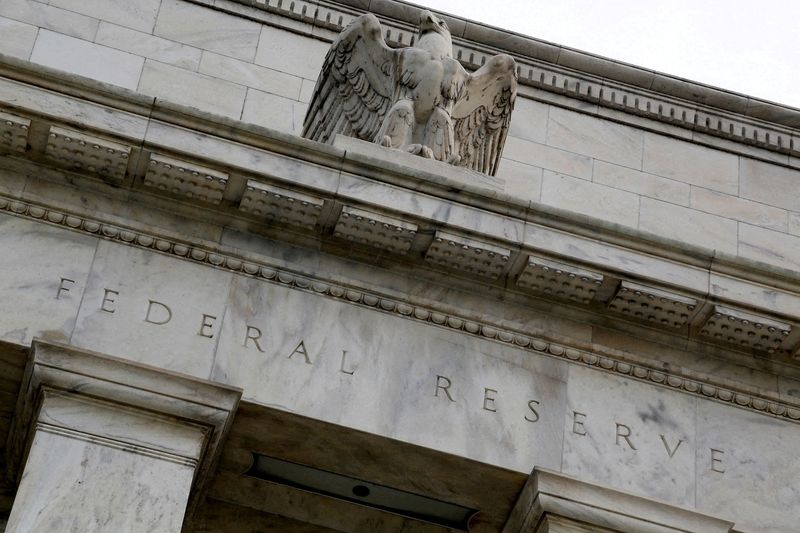By Mike Dolan
LONDON – It’s Friday the 13th and more than $10 trillion has now been sliced off the value of global stock markets this year while ‘Misery Indexes’ that blend inflation and jobless rates are spiking. Is it already time for central banks to blink?
Markets have started to panic about likely multiple central bank interest rate rises to rein in inflation from 40-year highs. Investors are desperate for any sign of that tightening calculus shifting from price pressures to demand-sapping cost of living squeezes and recession risks.
Conditioned for years to expect easier monetary policy to soften economic or political shocks, savers and speculators have had to adjust this year to the idea that high inflation itself is perhaps the biggest shock and there’s no instant ‘policy put’ afoot.
Far from riding to the rescue of anxious equity and bond markets, central banks have appeared determined to keep tightening. As Societe Generale points out, long-term bond yields and tightening financial conditions indices are rising in tandem – unusually, after at least two decades in which yields plunged in response to financial swoons.
But there’s always a policy tipping point if a looming recession itself nixes inflation expectations.
Easing the cost of living squeeze is clearly the political priority. But energy and food prices driven higher by supply constraints may not respond to higher rates, while higher borrowing costs make credit more expensive for poorer households and zap the often over-inflated asset holdings of richer folk.
The year’s two biggest political shocks – Russia’s invasion of Ukraine and China’s zero-Covid lockdowns – exaggerate both inflationary and recessionary forces. But how quickly the demand hit dominates thinking is what markets now have to watch.
The Washington-based Institute for International Finance on Thursday cut its global growth forecasts to show a ‘de facto flatlining’ of the world economy this year, with a contraction in China this quarter.
BANK BLINKS
The Bank of England last week looked like the first of the previously hawkish G7 central banks to hesitate at the near impossible task ahead. Flagging both 10% inflation and a contracting economy by year-end, it nudged up interest rates again but revealed internal splits on the need for more.
Suggesting the BoE’s hesitation is more than warranted, data on Thursday showed the UK economy already unexpectedly contracted in March – even before energy price caps were lifted and tax raised.
While money markets still expect UK policy rates to more than double from here to above 2% next year, 2-year gilt yields are sliding again, dropping more than half a percentage point since the BoE’s meeting to as low as 1.2%. The pound has nosedived more than 3% over the same period and is now down almost 10% this year against the dollar.
Britain may have peculiar domestic problems – including Brexit, a sharp jump in the energy price cap and rising taxes – but many may see it as a poster child for the policy balancing act ahead.
Even as European Central Bank officials talk openly of interest rate rises, markets this week scaled back their expectations of tightening by year-end by 15 basis points to less than 80 bps. Two-year German benchmark yields plunged back to as low as zero from 35 bps.
U.S. Federal Reserve officials appeared to double down on their hawkish rhetoric of multiple 50 bps rate hikes as April inflation of 8.3% again exceeded forecasts while labour markets remain tight.
In contrast to Europe, two-year U.S. Treasury yields held above 2.5% – helping push an already lofty dollar to 20-year highs and tightening global conditions further.
Yet the brewing storm did see U.S. money market estimates of the peak Fed rate next year fall back to as low as 3% from as high as 3.40% earlier this month.
Are cracks appearing as ‘misery’ sets in?
So-called ‘Misery Indexes’ were devised in the late 1960s and are crude aggregators of inflation and unemployment rates designed to capture the extent of household stress. Some add official interest rates to illustrate the ebb and flow of credit costs.
Higher inflation has these seismographs of public disquiet on the move again. Indexes that capture interest rates will jump further in the months ahead if central banks press on. And if inflation doesn’t subside before unemployment rises, then the mix could become explosive.
Of the G7, the UK already looks like the outlier with Britain’s ‘Misery Index’ already at its highest in more than 20 years.
“The BoE is probably the first central bank that has conceded the battle against inflation in favour of saving the economy and the UK consumer from the consequences of a deep recession,” Jefferies strategists told clients.
“Nevertheless, the misery index will start to climb and this is certainly not good for the pound or UK gilts.”
Related columns:
Sterling tailspin as BoE maps 10% inflation and recession
‘Mom & pop’ investors left high and dry in tech, crypto meltdown
Fed fingers crossed for 1994 re-run as hiking path shortens
The author is editor-at-large for finance and markets at Reuters News. Any views expressed here are his own
(by Mike Dolan, Twitter: @reutersMikeD; Editing by Kirsten Donovan)
